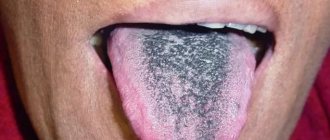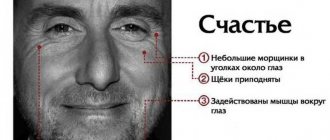Painful lumps that appear behind the ear or in the nose area not only cause discomfort, but in some cases can pose a serious danger. It is strictly not recommended to leave the phenomenon without attention and treatment, since these disorders may turn out to be a malignant neoplasm or a serious abscess.
A lump behind the ear, in the earlobe or in the nose area can appear at any age. Gender, like age, does not affect the likelihood of developing pathology. If the lump does not go away within 5 days, or if it grows rapidly and there are symptoms of general intoxication, such as fever and general weakness, you should urgently visit a doctor.
For help, you can initially contact an ENT doctor or therapist. After the examination, if necessary, the patient will be referred to an appointment with a surgeon or oncologist. In most cases, treatment is carried out by an otolaryngologist.
Reasons for appearance
Lumps in the ear or nose area can appear for many reasons. It is very important to install them before starting treatment, as this is the key to ensuring that further therapy will be as effective as possible. Seals can form for the following reasons:
- development of a malignant process in mucosal tissues, soft tissues or lymph nodes;
- inflammation of the lymph node - a painful lump behind the ear that causes intoxication of the body;
- chronic inflammatory diseases of the ears;
- chronic inflammatory diseases of the nasopharynx - seals in the nose appear with prolonged absence of treatment;
- blockage of the sebaceous gland, due to which its contents cease to be released and a compaction develops;
- fibroma - usually appears as a small ball in the earlobe;
- serious hormonal changes in the body - often cause compactions;
- proliferation of lymphatic tissue of the adenoids - leads to the appearance of compaction and bumps in the nasal cavity;
- a sharp decrease in the activity of the immune system;
- traumatic injury, after which internal inflammation develops. A lump appears in the earlobe, a large inflammation behind the ear or in the nose area;
- infection when ear piercing due to insufficient sterility of the instrument - can occur when piercing the earlobe or its upper part for inserting earrings. In this case, the seal in the earlobe hurts and festers. The skin turns red;
- the beginning of the formation of a boil;
- foreign body in tissues;
- benign neoplasms;
- malignant tumors.
Only a doctor can determine exactly what caused the problem and how to treat it after examining the patient and, in some cases, additional examination using modern instruments and performing the necessary tests.
Tumor under the ear
Tumor under the ear: treatment, causes of occurrence
The appearance of a tumor under the ear may not cause serious harm to health, but in order to avoid possible complications, it is necessary to diagnose the type of this tumor by a doctor.
Tumors often develop due to malfunctions in the immune system, due to a lack of microelements and vitamins in the human body, and due to violations of hygiene rules. Tumors above the ear can also develop due to viral infections and injuries.
A tumor under the ear can occur due to various diseases: lymph nodes, lipomas, neoplasms, boils, nevi, papillomas, cysts, lyfangioma and hemangioma, cancer. Therefore, it is necessary to go to a specialist who will make a diagnosis and select treatment.
Typically treatment in these cases is with medications or surgery.
Pain remaining after treatment and hearing loss should be of concern.
Lymphadenitis
Due to the enlargement of the lymph nodes, a tumor may appear under the ear. The symptoms will be as follows: swelling, severe pain of a pulsating nature, localized on the left or right under the lower jaw when pressed.
Furuncle
This tumor is a purulent, severe inflammation, it differs in color and is easily palpated, the pain on palpation is very strong.
The boil is in the shape of a cone, with a purulent area in the center. The pus comes out on its own; there is no need to press on the boil and cause an infection.
Wen
The tumor occurs due to blockage of the sebaceous glands. As it swells and grows, the formation becomes painful on palpation. It can grow up to several centimeters. Requires timely treatment.
Swelling of the ear
Edema or perichondritis is a tumor localized in the auricle and in the center of the ear, in which the cartilage becomes inflamed. The disease is infectious. It usually causes swelling of the entire ear, severe pain and pus.
Lipoma
This type of tumor under the ear is harmless and benign. Its growth is slow, the lipoma does not cause pain, and its composition is soft. Often does not require treatment.
Cancer
Most often, a cancerous tumor under the ear is a sarcoma. It is formed from connective tissue. It looks like a dark colored knob-shaped lump. Usually painful. May contribute to the formation of pus and fistulas.
Symptoms to see a doctor may include:
- Strong pain;
- Throbbing pain;
- Enlarged lymph nodes;
- Increase in tumor size;
- Inflammatory processes;
- Presence of pus;
- Change in tumor color.
First, you need to come for an examination to a therapist or dentist. A knowledgeable specialist is needed to diagnose the cause of a tumor under the ear.
In order to make a diagnosis, you need:
- Undergo an ultrasound examination;
- To make an X-ray.
If lymphadenitis is present, it is necessary to eliminate the infection or overcome the virus that caused the inflammation. The patient is prescribed antiviral and immunomodulatory drugs.
If the lymph nodes are inflamed, then treatment will be with medication.
If there is a purulent process, the doctor prescribes antifungal medications and antibiotics. For hygiene of the sore spot, you need to use antiseptic drugs.
If a patient has a wen and needs to remove it, then first a cortisol injection is given. The operation will be performed with local anesthetics.
Small lipomas can be eliminated without surgery.
If cancer is suspected, treatment will be carried out by an oncologist.
Tumor formations can be removed either by surgery or by laser. When a tumor becomes malignant, surgical removal is usually done.
To avoid complications, timely treatment is necessary. If the compaction is small in size, then, as a rule, after its elimination, complications do not arise.
But even with an ordinary boil, severe inflammation can occur, and the boil must be removed by a surgeon.
Complications may be as follows:
- Inflammatory tissue processes;
- Tissue suppuration;
- Infectious diseases;
- Diseases of the mouth and ears;
- Inflammatory processes in nerve tissues;
- The appearance of malignant neoplasia.
To avoid complications, you need not to overcool or heat the diseased area, not to press on pus and fat formation, and not to physically influence them.
Pelvic tumor in women
To avoid the appearance of a tumor above the ear, you must adhere to the following rules:
- Dress according to weather conditions;
- Do not overcool;
- Avoid drafts;
- Treat viral infections in a timely manner;
- Try to stress less;
- Strengthen the body;
- Massage your face;
- Eat right.
If a small tumor appears above the ear, you should not let the disease progress, do not treat yourself, but contact a specialist at the Onco.Rehab clinic to make the correct diagnosis and select the necessary treatment program.
Types of seals
Seals that appear in the tissues behind the ear, in the earlobe or in the nose area are divided into several types. Depending on which of them the diagnosed compaction belongs to, the necessary therapy is prescribed. An error at this stage of diagnosis will result in ineffective treatment or even worsening of the patient’s condition.
Whatever type of lump it is, it must be shown to a doctor. Painful sensations can be eliminated only after the necessary therapy. The seals themselves pass extremely rarely, and you should not count on this.
Does your child need specialist help?
You can make an appointment with a doctor by phone
8-(4822)-33-00-33
or using the online registration system on the website
To make an appointment with a doctor
Read also: Dermatitis in children
Parotid fistula
Occurs when there is an intrauterine disorder in the formation of the hearing organ. A fistula is a canal that opens behind the ear in the area of the cartilaginous part of the auricle, and the other end goes into the oral cavity, middle ear or neck area. A lump at the site of the fistula outlet is formed only when the tissues of the canal become inflamed.
Diagnostics
During the patient’s initial visit, the doctor interviews him regarding the time the lump was detected and the possible presence of provoking factors, and also examines and palpates the problem area. After this, if possible, a primary diagnosis is made or diagnostic tests and examinations are prescribed. If a malignant process in the tissues is suspected, the patient is referred for consultation to an oncologist. To make an accurate diagnosis, the following diagnostic methods and tests are used:
If a cancerous tumor is suspected, a biopsy is indicated. The patient may also be prescribed blood tests and a general examination of the body to exclude the presence of metastases. Lumps on the nose and ear area are not often cancerous.










